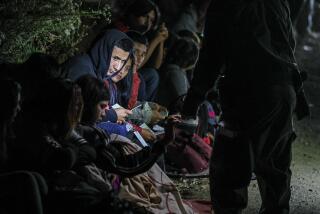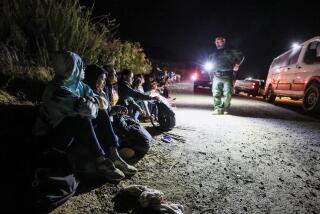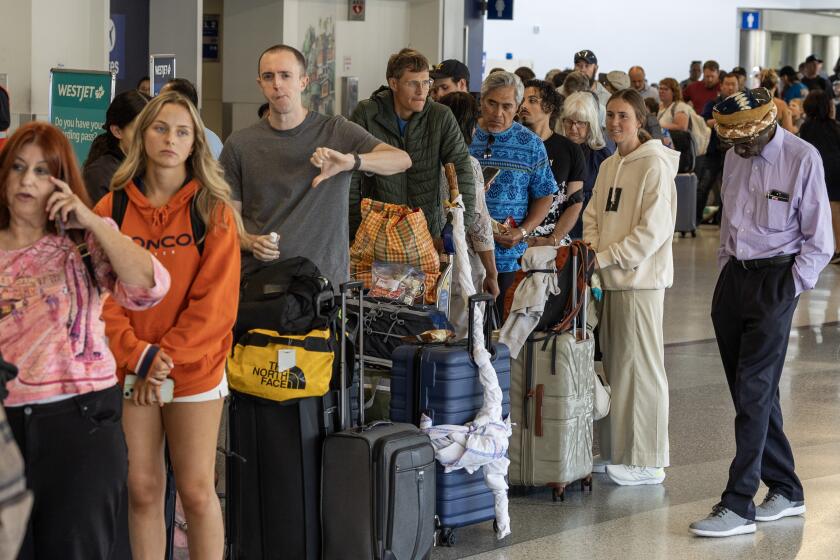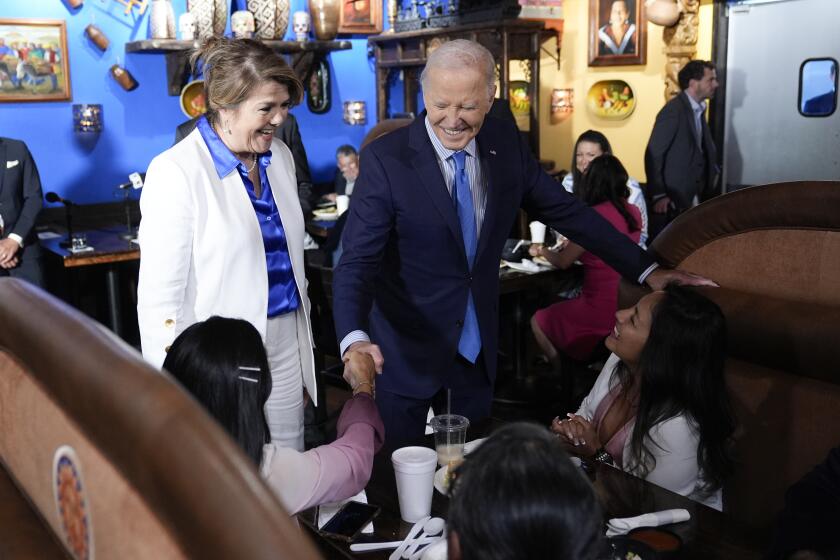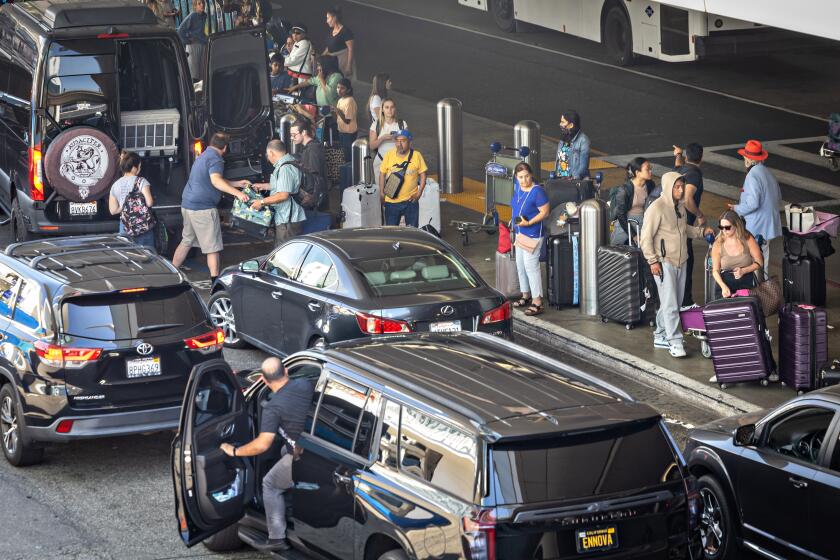California says it can no longer afford aid for COVID testing, vaccinations for migrants

All day and sometimes into the night, buses and vans pull up to three state-funded medical screening centers near California’s southern border with Mexico. Federal immigration officers unload migrants predominantly from Brazil, Cuba, Colombia and Peru, most of whom await asylum hearings in the United States.
Once inside, coordinators say, migrants are given face masks to guard against the spread of infectious diseases, along with water and food. Medical providers test them for the coronavirus, offer them vaccines and isolate those who test positive. Asylum seekers are treated for injuries they may have suffered during their journey and checked for chronic health issues, such as diabetes or high blood pressure.
But now, as the state confronts a projected $22.5-billion deficit, Gov. Gavin Newsom said it could no longer afford to contribute to the centers, which also receive federal and local grants. The Democratic governor in January proposed phasing out state aid for some medical services in the next few months, and eventually scaling back the migrant assistance program unless President Biden and Congress step in with more help.
California began contributing money for medical services through its migrant assistance program during the deadliest phase of the COVID-19 pandemic two years ago.
The state helps support three health resource centers — two in San Diego County and one in Imperial County — that conduct COVID-19 testing and vaccinations and other health screenings, serving more than 300,000 migrants since April 2021. The migrant assistance program also provides food, lodging and travel to unite migrants with sponsors, family or friends in the U.S. while awaiting their immigration hearings, and the state has been covering the humanitarian effort with an appropriation of more than $1 billion since 2019.
Though the White House declined to comment, and no federal legislation has advanced, Newsom said he was optimistic that federal funding would come through, citing “some remarkably good conversations” with the Biden administration.
Already, one pot of federal money has been identified. The Federal Emergency Management Agency and the U.S. Department of Homeland Security issued a statement noting that local governments and nongovernmental providers would soon be able to tap into an additional $800 million in federal funds through a shelter and services grant program. FEMA did not answer questions about how much the agency spends serving migrants.
“We’re continuing our operations and again calling on all levels of government to make sure that there is an investment,” said Kate Clark, senior director of immigration services for Jewish Family Service of San Diego, one of two main migrant shelter operators. The other is run by Catholic Charities Diocese of San Diego.
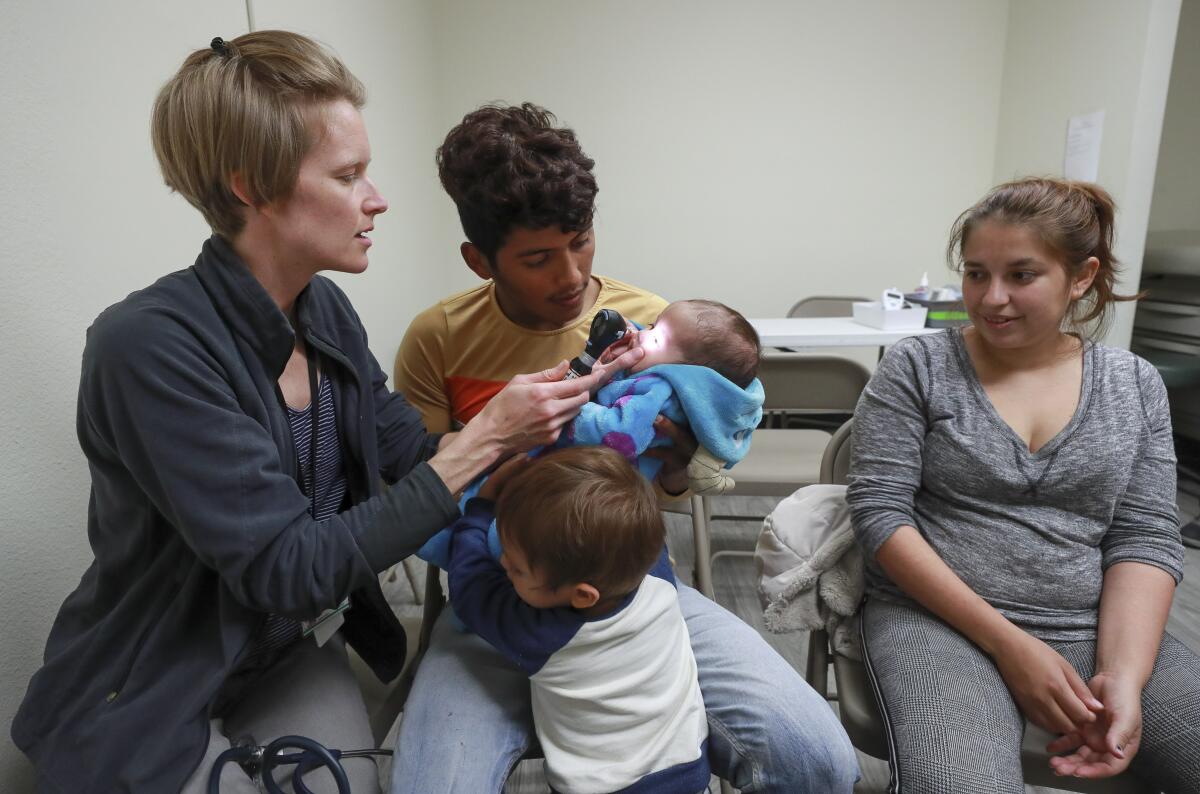
Although health workers and immigration advocates want the state to continue funding, Newsom appears to have bipartisan support within the state for scaling it back. He promised more details in his revised budget in May, before legislative budget negotiations begin in earnest. And, he noted, conditions have changed such that testing and vaccination services are less urgent.
San Diego County Supervisor Nathan Fletcher, a Democrat, agreed that the burden should be on the federal government, though local officials are contemplating additional assistance.
“The pandemic conditions no longer warrant this large investment from the state, especially since immigration is supposed to be a federal issue,” said State Senate Republican leader Brian Jones in a statement.
Transitioning out of the COVID emergency phase could eventually spell the end of universal access to free vaccines, treatments and tests.
California began its migrant assistance support soon after Newsom took office in 2019 and after the Trump administration ended the “safe release” program that helped transport migrants seeking asylum to be with their family members in the United States. It was part of California’s broad pushback against Trump’s immigration policies; state lawmakers also made California a so-called sanctuary state, an attempt to make it safe from immigration crackdowns.
California along with local governments and nonprofit organizations stepped in to fill the void and take pressure off border areas by quickly moving migrants elsewhere in the United States. The state’s involvement ramped up in 2021 as the pandemic surged and the Biden administration tried to unwind the Trump administration’s “Remain in Mexico” policy. Although some cities in other parts of the country provided aid, state officials said no other state was providing California’s level of support.
In a coordinated effort, migrants are dropped off at the centers by federal immigration officers, then are screened and cared for by state-contracted organizations that provide medical aid, travel assistance, food and temporary housing while they await their immigration hearings.
Both Catholic Charities and Jewish Family Service coordinate medical support with UC San Diego. The federal government covers most of the university’s costs, and the state pays for nurses and other medical contractors to supplement healthcare, according to Catholic Charities.
It often takes one to three days before migrants can be put on buses or commercial flights, and in the meantime, they are housed in hotels and provided with food, clothing and other necessities as part of the state’s program.
“Many of them come hungry, starving,” said Vino Pajanor, chief executive of Catholic Charities in San Diego, who described the screening and testing process at the centers. “Most of them don’t have shoes. They get shoes.”
Officials said about 46,000 people had been vaccinated against the coronavirus through the program. They said the figure was significantly lower than the number of migrants who had come through the centers because some were vaccinated before reaching the U.S. and younger migrants were initially ineligible, while others refused the shots.
A new CDC report found that children under 5 are being vaccinated for COVID-19 at lower rates than older children.
According to the California Health and Human Services Agency, the state plans to phase out some medical support, but the sheltering operations are expected to continue “for the near term” with their future determined by the availability of federal funding. Of the more than $1 billion spent by the state, $828 million has been allocated through the Department of Public Health, according to the governor’s office.
The agency said that although the state had not adopted specific plans to cut the sites’ capacity, it would put a priority on helping families with young children and “medically fragile individuals” if the shelters were overwhelmed by arrivals.
Some immigration advocates said the state was making the wrong choice.
“Now’s the time for the state of California to double down on supporting those individuals that are seeking relief from immigration detention,” said Pedro Rios, who directs the U.S.-Mexico border program at the American Friends Service Committee, which advocates on behalf of migrants. “I think it sends an erroneous message that the issues are no longer of concern.”
This story was produced by Kaiser Health News, a national newsroom that provides in-depth coverage of health issues and that is one of the three major operating programs at Kaiser Family Foundation. KHN is the publisher of California Healthline, an editorially independent service of the California Health Care Foundation.


